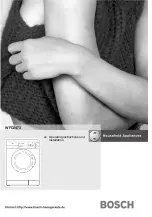Reviews:
No comments
Related manuals for Innov-is 40

C85 2018 BS NSC BASIC
Brand: COMAC Pages: 32

4623LE PLUS
Brand: Janome Pages: 51

MX-E Series
Brand: Datalogic Pages: 120

BDP-15D
Brand: Bulldog Security Pages: 7

Jem Platinum 720
Brand: Janome Pages: 41

DACeco M-TYPE
Brand: Duerkopp Adler Pages: 24

14420
Brand: National Flooring Equipment Pages: 25

FaxPress
Brand: Castelle Pages: 5

KK-STF-480
Brand: KISANKRAFT Pages: 14

Magnolia 7034D
Brand: Janome Pages: 42

E12327-00 BIG BERTHA XSM30
Brand: BETCO Pages: 36

KORI NTO FB
Brand: N&W Global Vending Pages: 38

5800 Els
Brand: Gamma Pages: 32

Gansow 1250
Brand: IPC Pages: 40

M-920
Brand: Muratec Pages: 41

Sniper 2-100
Brand: Sandia Plastics Pages: 13

wfd2473
Brand: Bosch Pages: 24

DPK-5
Brand: SunStar Pages: 18

















